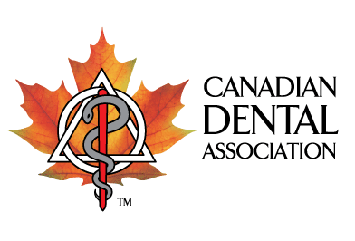Note: The following section outlines the various private practice models available to dentists in Canada. More information about other practice models within the public sector (e.g., in military, hospital, or academic settings) will be developed at a later date.
Practice Models
By Nick Korhonen CPA, CA
Whether you decide to own a practice or work as an associate, there are a variety of practice models for you to consider as you move along your career path. One model does not fit all, nor are you committed to a particular model for your entire career. Instead, at different stages of your life and career, one model may fit your needs better than the rest.
Single Owner – Sole Proprietorship
This particular model is the simplest model of ownership and has the lowest maintenance. In a sole proprietorship, one single personal tax return is filed. This type of practice is usually fairly small, and production is generally less than $500K per year. Because of its relatively small size and production, it is somewhat rare today to see an associate working in this sole proprietorship model of care.
Single Owner – Professional Corporation (PC)
Nowadays, it is more common to see solo practitioners owning and incorporating their practice. Having a professional corporation (PC) offers owners many tax advantages, especially as money held within the PC is taxed at a lower rate than personal tax returns. Additionally, in certain circumstances, owner dentists may be able to split their income with their spouses or family members.
Another advantage of holding funds in the PC is that the money can be used to pay down practice debt at a faster rate. Additionally, when the practice is sold, the owner and their family members can sell their shares of the PC, which may allow them to benefit from the Lifetime Capital Gains Exemption. This exemption currently allows each shareholder to receive proceeds of $867K (tax-free) on the sale of the practice.
It’s important to note that associates are also able to incorporate.
Joint Ownership
Two or more dentists may operate more than one practice (usually a small number) together in which they share ownership. This can be structured in a number of ways, the most common being a partnership, or joint ownership of a single PC. The purpose of a joint-ownership model is to co-own the business and work together toward a common goal. Joint ownership also helps reduce the administrative burden associated with ownership and allows each dentist more time to be chairside to focus on patient care and revenue generation for the practice. Patients may be shared amongst the dentists, but appointment availability and scheduling issues often determines which dentist a patient will see.
Although there are advantages to partnering with a colleague and sharing the responsibilities of practice ownership, partnership can be likened to a marriage. When things are going well, the partnership also works well; but when disagreements occur, it can be difficult to work through them. As such, it is imperative to have a well-drafted agreement that outlines how disputes and disagreements will be settled, the roles and responsibilities of each partner and how revenues/profits will be distributed. Additionally, if one partner wants to dissolve the partnership or buy the other partner out, these terms should also be included in the formal agreement. It is essential when entering into any contractual agreement that competent advisors (e.g., lawyers, accountants, bankers, etc.) that have specific dental industry experience are consulted. Consider asking colleagues for references to find the right experts for your situation.
Cost-Sharing
These days, a joint ownership model is less common, but cost-sharing agreements are popular and have gained more prominence than joint ownership. As the name suggests, dentists involved in this type of arrangement maintain their autonomy, run their individual practices, but share common expenses. The extent of shared costs can vary, however at a minimum, these costs include the rent, front office administrative staff and basic equipment.
Dental Practice Ownership as an Investment
Over the years, there has been an increase in dentists or dental groups owning multiple practices, most commonly as long-term investments. The number of offices that a single dentist or group owns can vary. Typically, as ownership of practices increases so do the complexities of providing quality, consistent care, administration and financial and tax reporting. General information about these practice models is outlined below.
Ownership of <5 practices (usually 2–4)
It is not uncommon for a single dentist owner with an entrepreneurial mindset to own multiple offices. The offices will either be owned under one main corporation, or more often each office will be a distinct PC. While this may be onerous with respect to administrative paperwork and filing separate tax returns, it is far easier if the owner wishes to sell one of the practices or shares of the specific PC. If the practices are housed under one corporation, when a practice is sold it becomes an asset sale, or else a complex reorganization may be required to allow for a share sale.
Over time and as the number of offices increases, the original owner may offer other dentists the opportunity to buy-in, to oversee a particular practice. This gives the owner more flexibility to manage all of the offices and he/she does not need to work in each office.
It should be noted that once a dentist owns multiple practices, banks require a more complex reporting structure and may be less inclined to offer 100% financing towards the purchase of additional practices.
For a dentist to own more than 5 dental practices alone can be challenging as bank financing may not be as readily available, the number of staff employed grows, and reporting structures as well as financial reporting become more complex in nature. As a result, dentists will often look for other ways to achieve their investment and growth goals.
Ownership of >5 practices—without private equity
Currently, there is a trend towards various groups working and coming together to maintain dental control centrally, similar to the optometrist-owned FYi Doctors. This can generally include up to 20–30 practices. If the group of practices spans provincial borders, each PC must adhere to the financial/tax and regulatory rules of the province where it is located.
The amount of non-dentist involvement can differ, but generally if there is less non-dentist involvement there is less regulatory risk. When non-dentists invest in dental practice ownership, they usually have the necessary experience in human resources, finance, marketing and management to contribute to the ownership team in exchange for their return-on-investment (ROI).
Note that if there is no private equity, the funds required to purchase additional practices or make further investments into existing practices are often self-financed, if the banks are unwilling to lend the required amount.
Ownership of >5 practices—with private equity
Multiple practice ownership can also be accomplished using funds from outside investors, including private wealth management firms. Typically, private equity investors (but not publicly traded companies) are wealthy individuals or groups that have money they want to invest to earn higher and more consistent returns than what they would earn with standard investments. The private equity funds are often put towards infrastructure investment, but all clinical responsibilities remain under the dentists’ domain.
With dental valuations on the rise, purchasing a practice can be expensive. Under this type of structure, the dentist can own shares, focus on patient care and rely on the infrastructure and systems brought to the table by the other investors to divest him/herself of the administrative responsibilities. For example, Heartland Dental currently owns over 600 practices in the United States. It is expected that this investment model will increase over time. Presently, there is 40% rate of penetration in the U.S. of dental practice ownership involving private equity while in Canada it is just 6%.
At some point in time an owner-dentist will want to sell his/her practice and transition from ownership to associateship and eventually retire. The dentist may sell to another dentist via a broker or may elect to sell to a dental corporation or group.
A typical arrangement in any purchase agreement is that the owner-dentist will remain for a period of time to associate in the practice and facilitate the transfer of goodwill to the new owner. More often than not, when the owner sells his/her practice to a dental organization, the agreement is that he/she will stay on as an associate for approximately 5 years and will be remunerated at 40% of the production. As an incentive and to reduce risk on the part of the organization, the associate fee can vary based on the production target of the owner-associate. To this extent, better production will result in a higher associate fee and vice versa.
While the organization will not interfere with clinical care, they usually have a designated dentist to oversee clinical affairs of their offices in general. The administrative functions and tasks of the owner-dentist are assumed by the organization and the main role of these employees is to ensure back office systems are running efficiently and the practice is more profitable.
The advantages of selling to a dental corporation or organization are outlined in this Table.
Advantages
- Premium paid for the practice (usually above valuation)
- Gain operational support – HR, bookkeeping etc.
- Clinical support from organization – CE, clinical directors
Disadvantages
- Lose autonomy over practice-related decisions
- Employment-type relationship with organization
- Expected to report to the Chief Dental Officer, finance team and Development Officer
For associate dentists that have not entered into an associateship agreement after selling to an organization or corporation, but are exploring associate opportunities with a dental corporation or group, it is important to have an idea of what your short- and long-term goals are so you can enter into an agreement knowing the pros and cons of your decision.
Consider the following:
- If you are a long-term associate, is the organization also a long-term entity or will they be looking to “cash out” in the near future when they have a critical mass of practices?
- Is clinical support readily available in form of mentorship, continuing education
- Is there an expectation to hit a certain production target?
- Is there an opportunity to buy equity in the corporation?
- What benefits are offered?
Nick Korhonen (Nick.Korhonen@mnp.ca) is Partner, Taxation Services, MNP.
As the National Tax Leader for MNP’s Professional Services team, Nick works closely with professionals in the dental, medical and legal industries to help them navigate the ever-changing Canadian tax landscape. Nick’s services include tax planning, restructuring, estate planning and assisting with the scientific research and experimental development (SR&ED) program and the purchase or sale of a professional practice.

